The First Helmet Radio: Paul Brown and Football’s Forgotten Dynasty
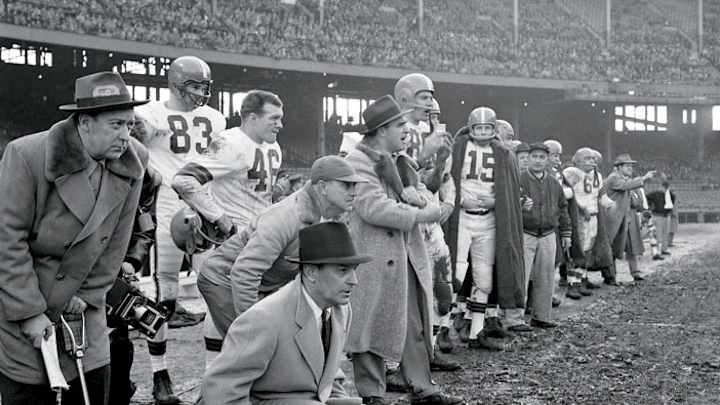
The First Helmet Radio: Paul Brown and Football’s Forgotten Dynasty
Brown on the sideline during the 1954 NFL Championship Game, a 58–10 drubbing of the Lions at Municipal Stadium. It was the ninth of the Browns’ 10 straight appearances in a championship game. (Hy Peskin/Sports Illustrated)

Cleveland assistants were placed up high for a bird’s eye view, communicating what they saw down to the field. (Neil Leifer/Sports Illustrated)
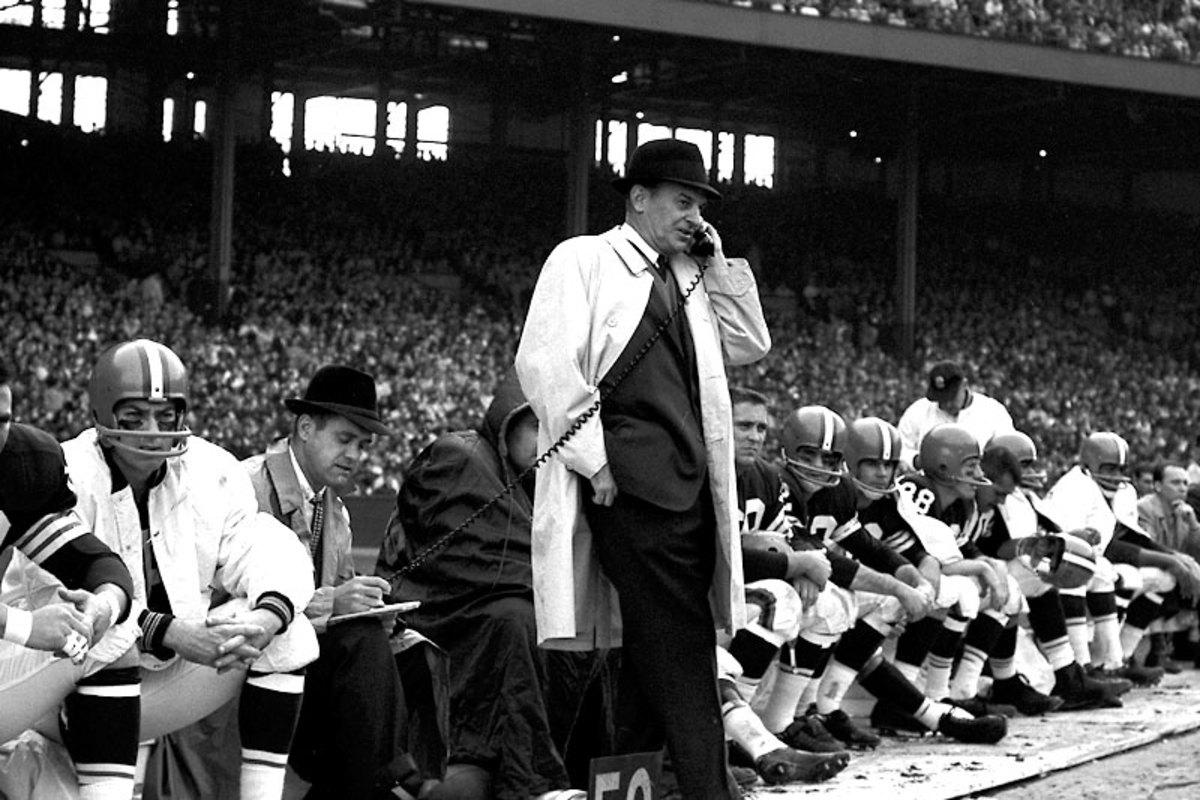
By 1959, Brown was finding it harder to tap unheralded talent and sustain the winning edge. (Neil Leifer/Sports Illustrated)
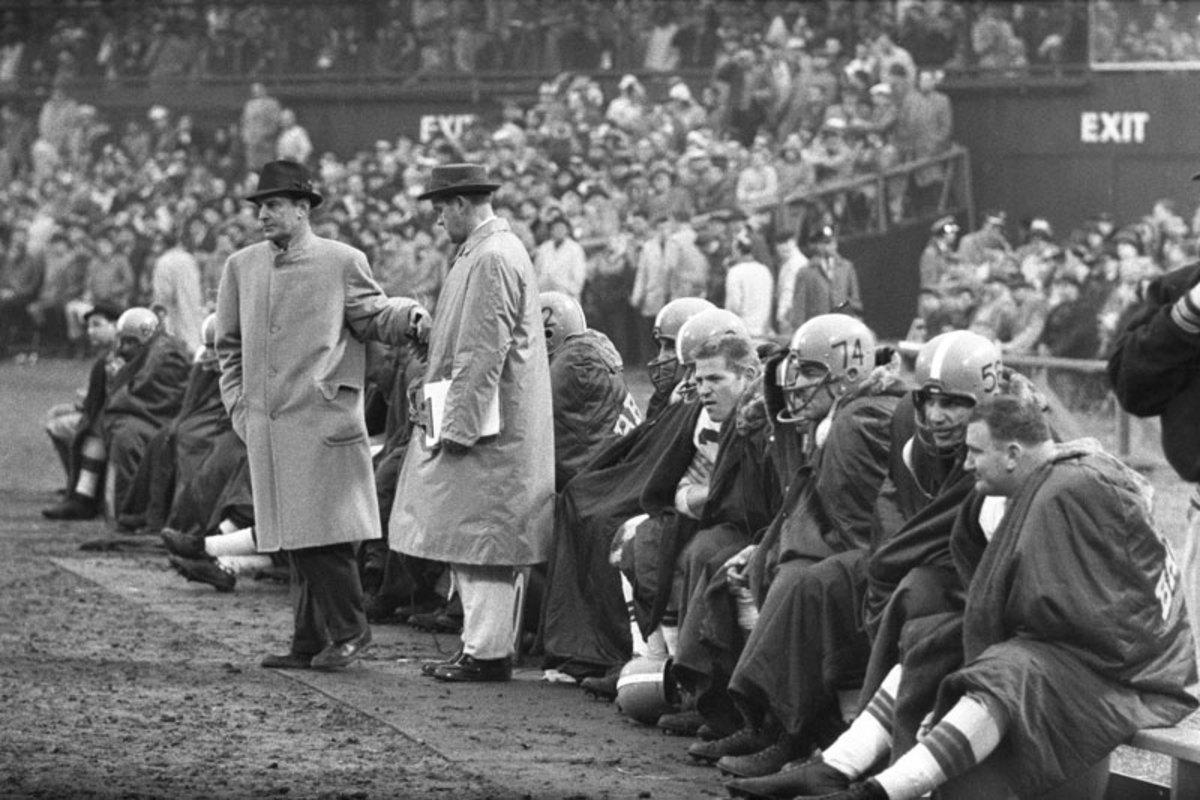
Strict rules concerning players’ behavior began to wear thin as Cleveland’s dynasty faded. (Neil Leifer/Sports Illustrated)
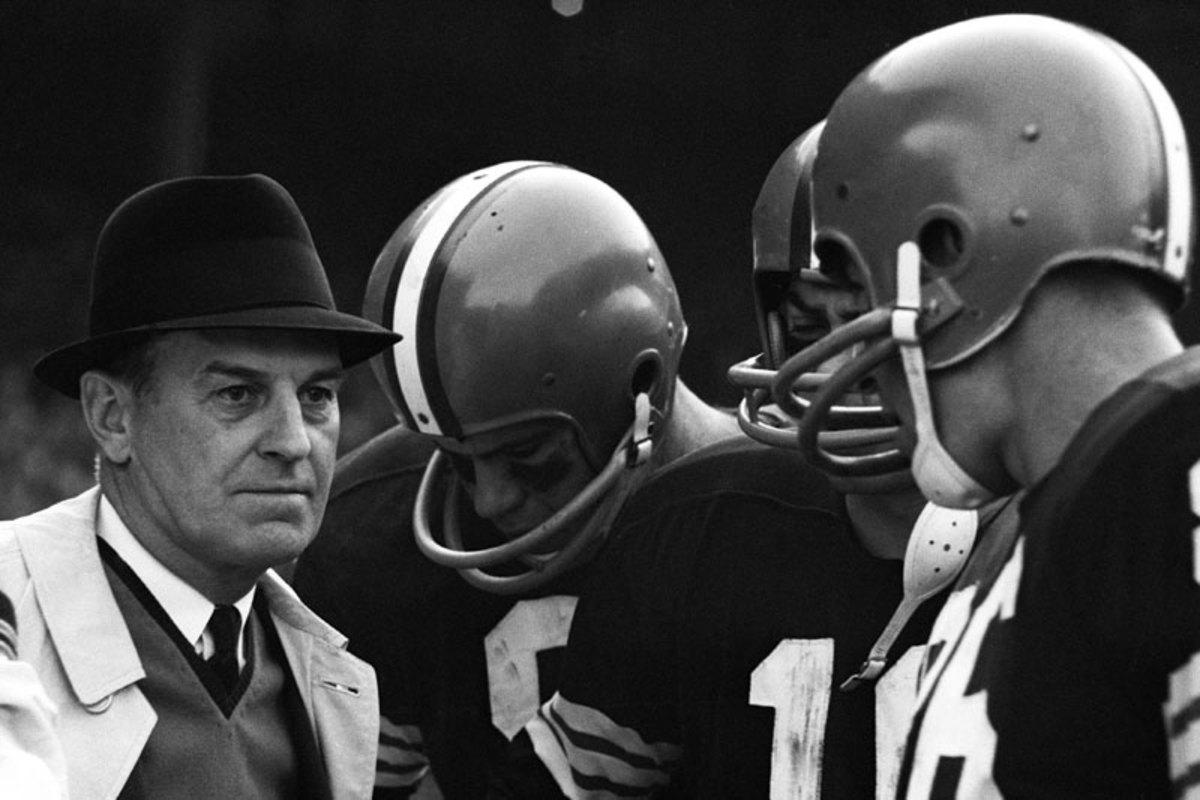
When Art Modell (left) bought the Browns in 1961, it was the beginning of the end of Paul Brown's tenure with the franchise. He was fired less than two years later. (Henry Barr Collection/Diamond Images/Getty Images)
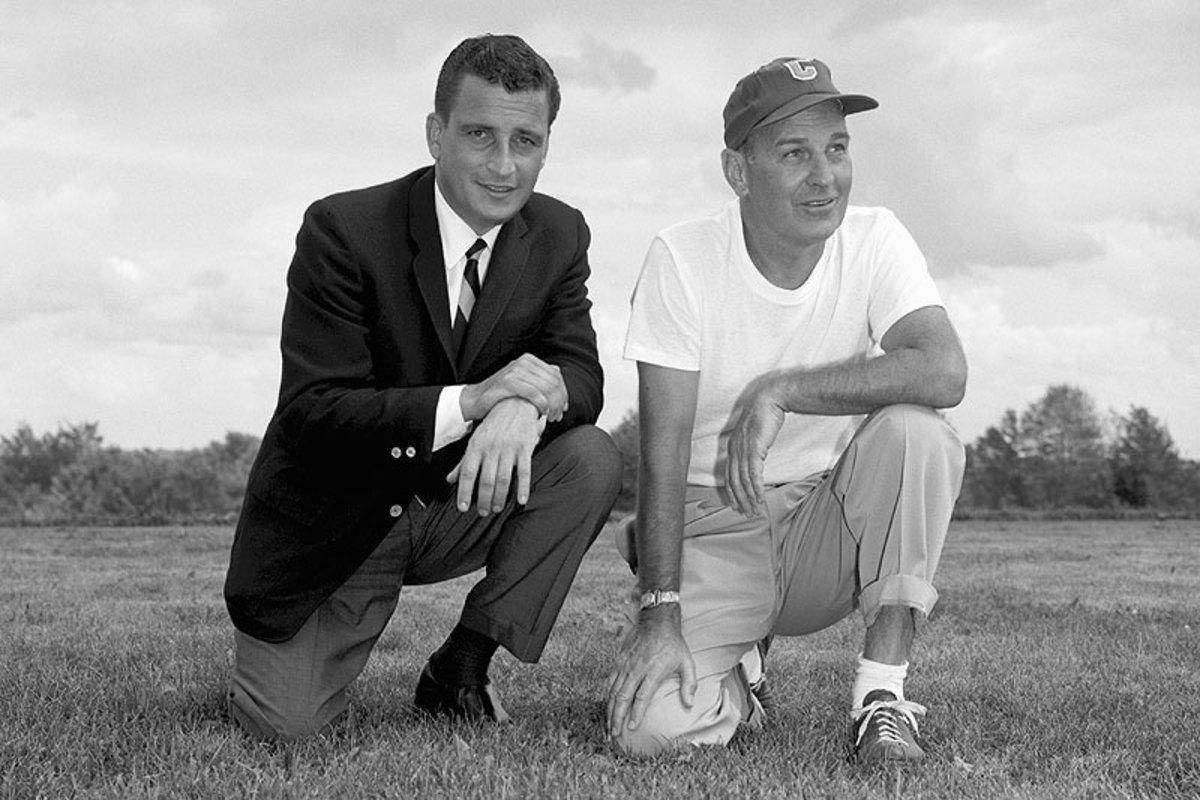
Brown with guard John Wooton on the sideline in ’62 at Kezar Stadium in San Francisco, facing one of the other old AAFC teams, the 49ers. (Neil Leifer/Sports Illustrated)
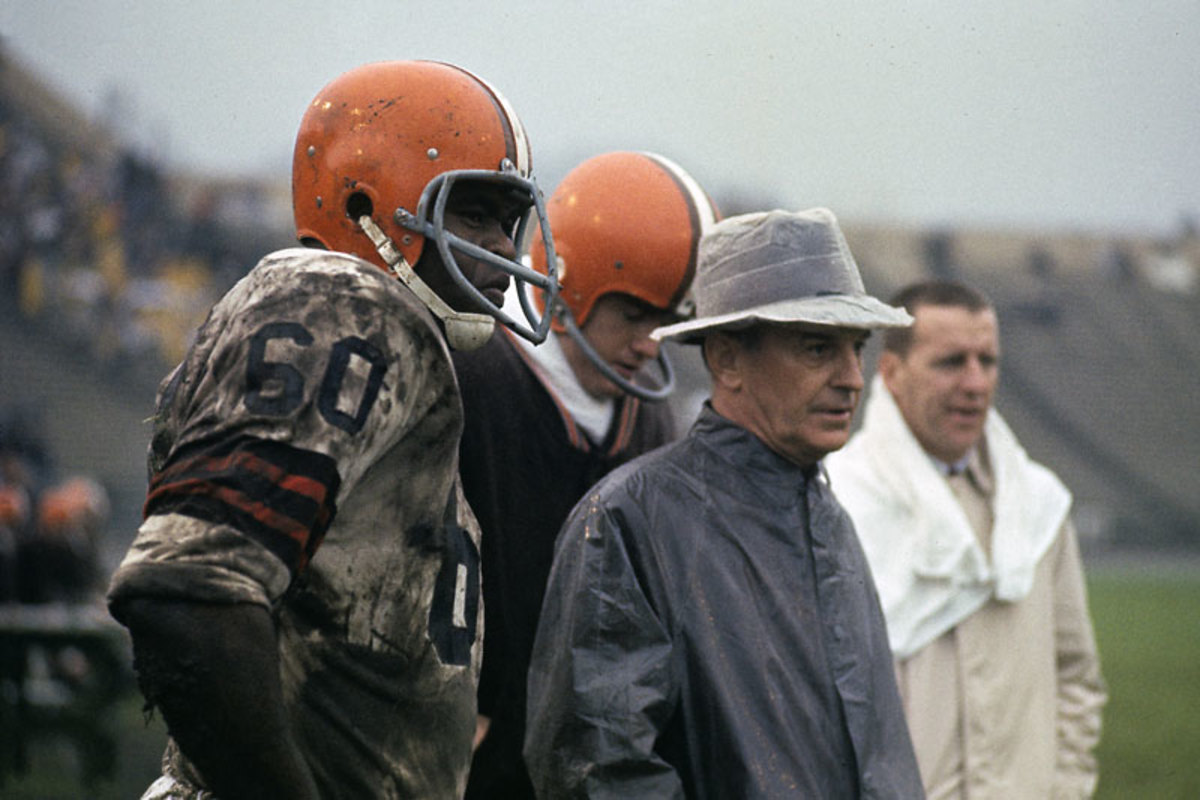
After five years out of the game, Brown founded the Bengals in 1968. (Tony Tomsic/Sports Illustrated)
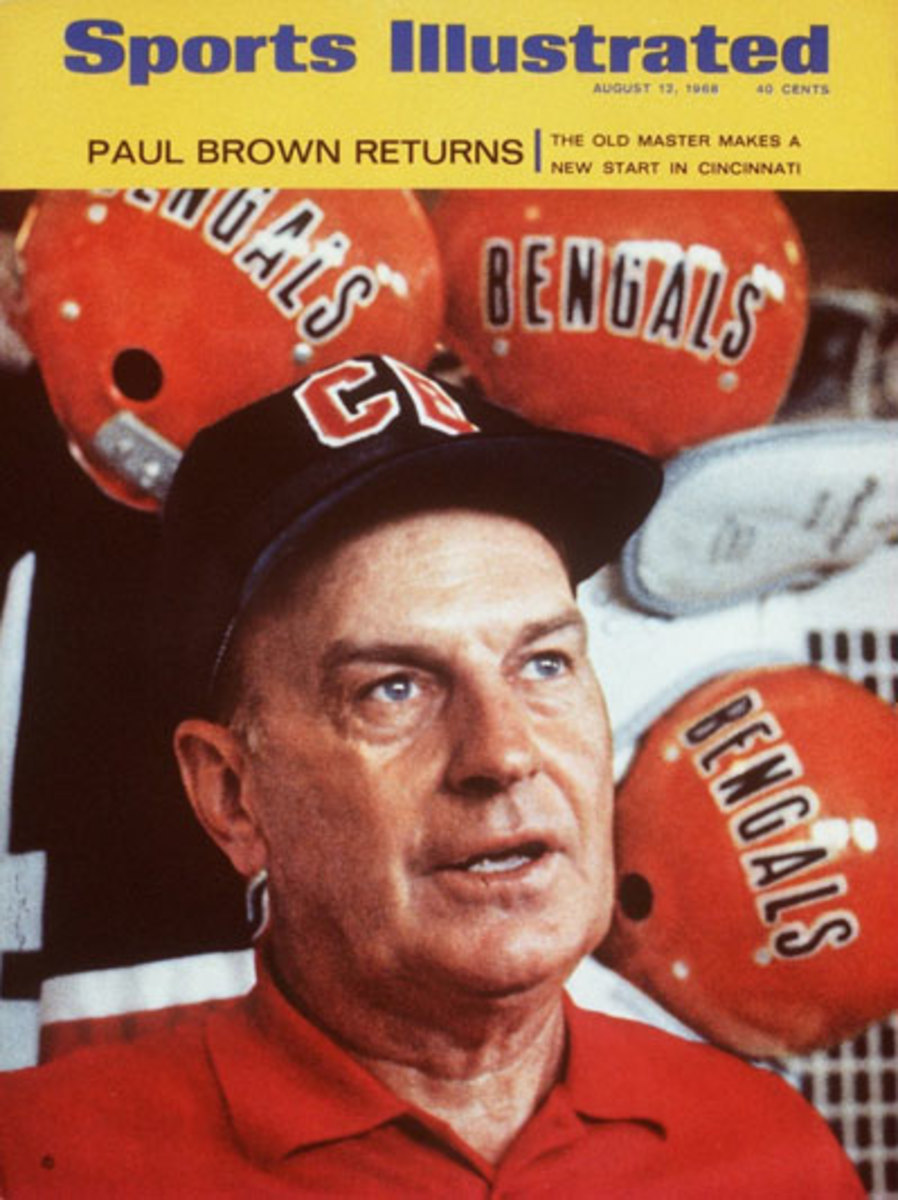
Brown confers with quarterback Sam Wyche—who’d later coach Cincinnati in a Super Bowl—during a game in 1969. (Tony Tomsic/Wireimage.com)
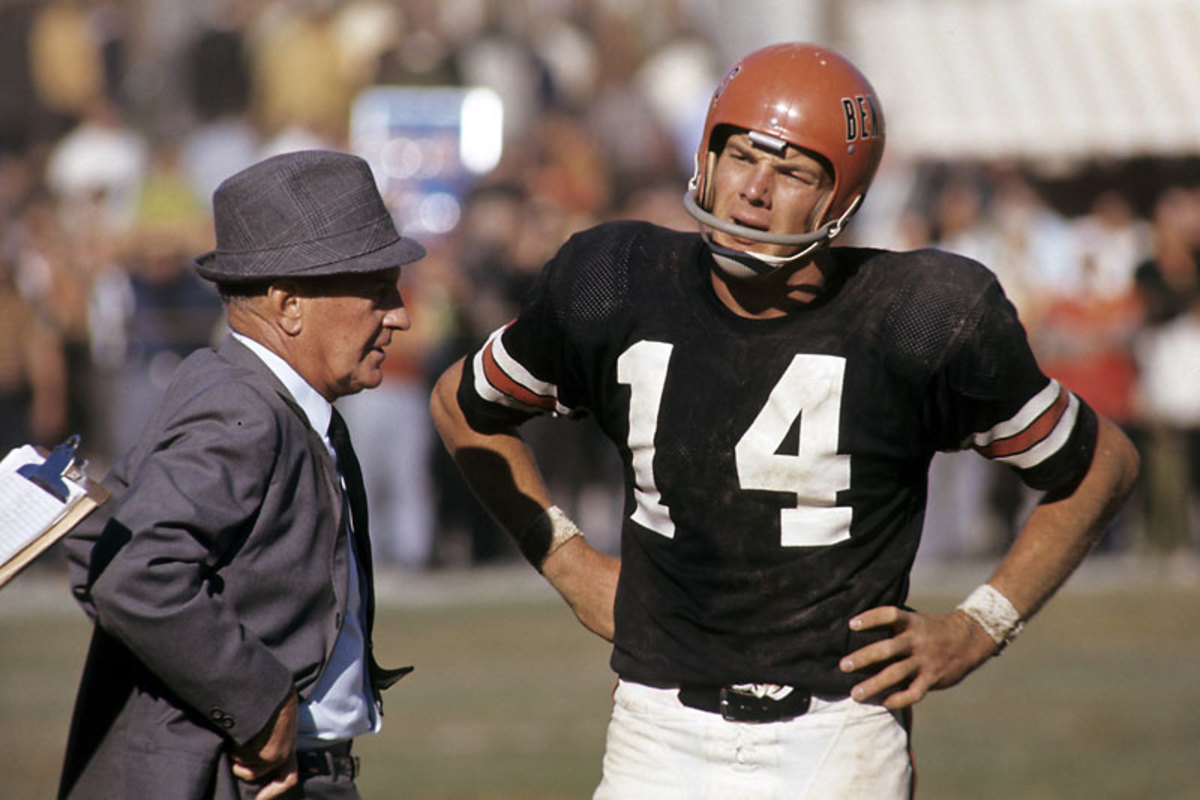
Bill Walsh worked as an assistant under Brown in Cincinnati, where the two refined the offensive concepts that Walsh would employ in San Francisco. He beat the Bengals in two Super Bowls. (Brian Horton/AP)
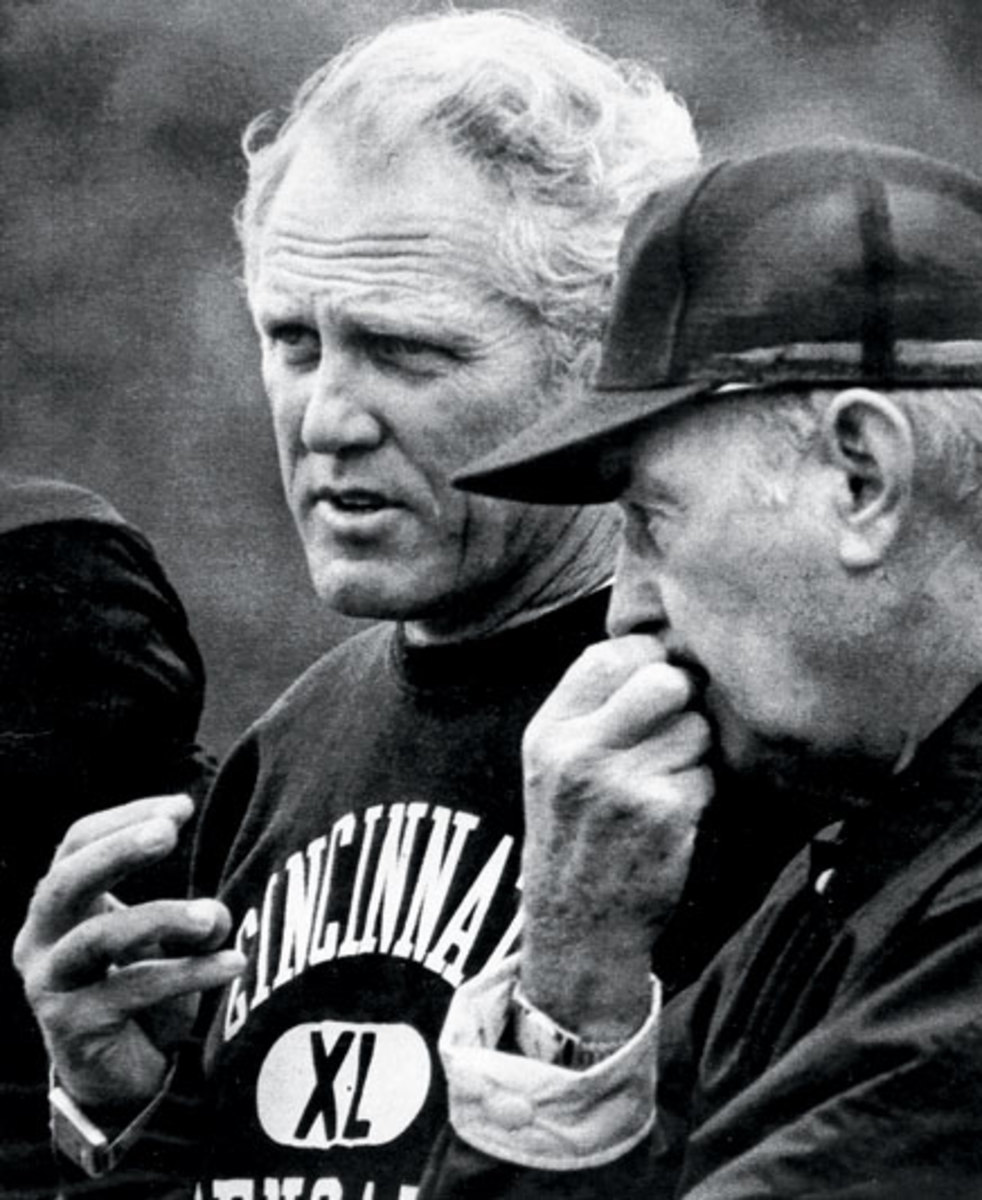
Brown pioneered many of the practices common in today’s NFL, from the draw play to film study, scouting and the taxi squad. (Long Photography Inc./Sports Illustrated)
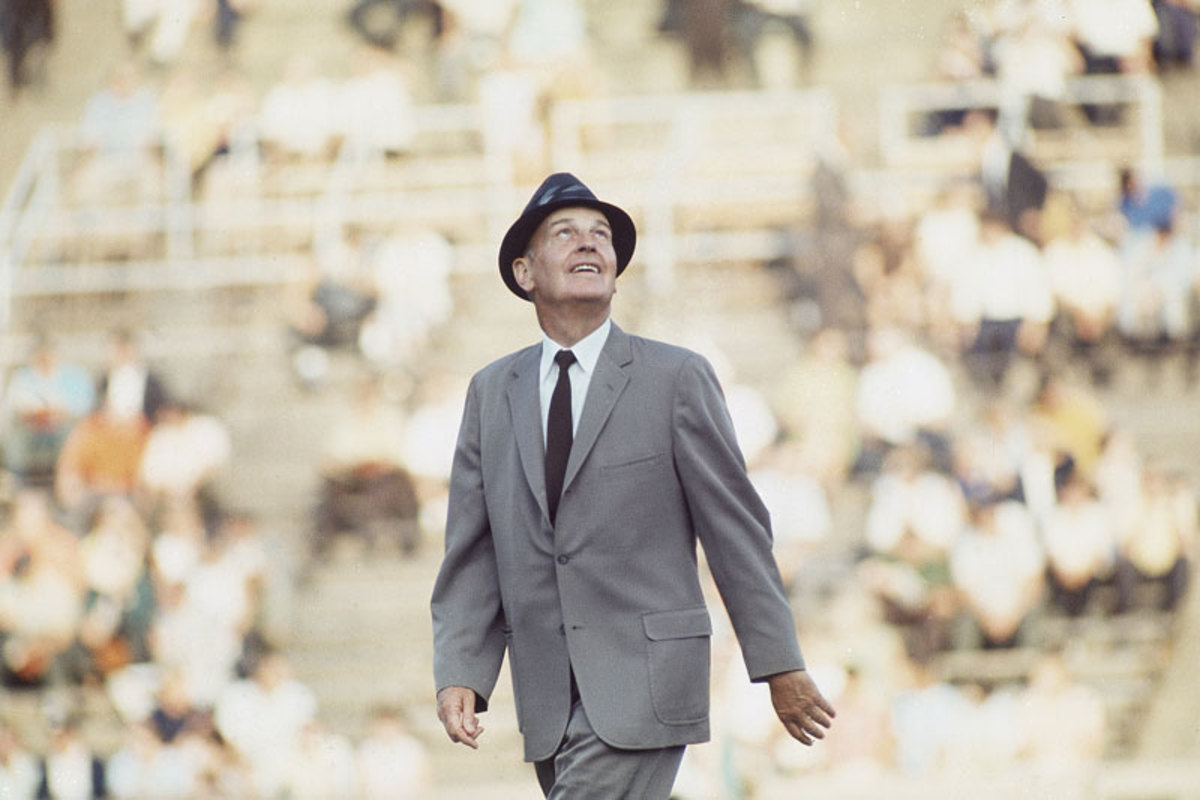
Published
